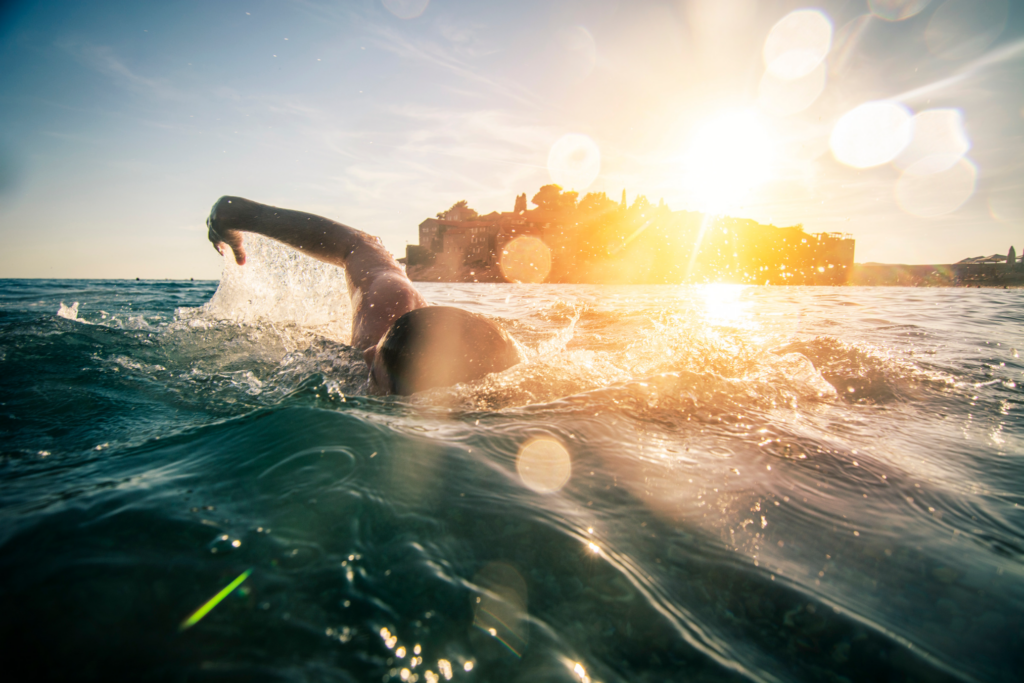
Swim Like a Dolphin, Dive Like a Seal
One of the most important skills that any human being should learn is knowing how to swim. Swimming can be a very useful skill if you want to enjoy the beach or a swimming pool. It can also be useful in chaotic situations such as being on a sinking ship or trying to save someone that’s drowning. But there are loads of moves to learn in order to master the skill of swimming.
In this blog post, we’ll go over some of the most essential moves you should learn while taking a swimming class or even trying to swim across the water. Read on if you want to swim like a dolphin in the deep blue sea.
- Freestyle Stroke
This stroke is also known as the front crawl, and it is the most basic and commonly used swimming stroke. It involves a continuous flutter kick and alternating arm strokes to propel yourself forward. The basic arm movement involves extending one arm forward and pulling it back past your hip, while simultaneously extending the opposite arm forward. You will want to keep your head facing down, with your mouth and nose in the water and your eyes looking straight down to maintain proper body position. To improve your freestyle stroke, you can work on your breathing technique by taking a breath to the side every few strokes, or by practicing a bilateral breathing pattern where you alternate breathing to each side.
- Backstroke
This stroke is swum on your back and involves a flutter kick and alternating arm strokes to move through the water. The basic arm movement involves starting with your arms at your sides and extending one arm over your head and into the water while pulling the opposite arm down to your side. You will want to keep your head back, with your eyes looking up and your mouth and nose above the water to maintain proper body position. To improve your backstroke, you can work on your arm and leg coordination, as well as your breathing technique, by practicing a consistent breathing pattern.
- Breaststroke
This stroke involves a frog-like kicking motion and a simultaneous arm movement that pulls your body through the water. The basic arm movement involves starting with your arms extended in front of you, then pulling your hands back towards your chest while simultaneously pushing your legs outward in a sweeping motion. You will want to keep your head facing forward, with your mouth and nose above the water and your eyes looking straight ahead to maintain proper body position. To improve your breaststroke, you can work on your arm and leg coordination, as well as your timing, by practicing the sweeping motion and timing your breathing with each stroke.
- Butterfly Stroke
This stroke involves a dolphin-like kicking motion and a simultaneous arm movement that lifts your body out of the water and propels you forward. The basic arm movement involves starting with your arms extended in front of you, then pulling both arms back towards your chest in a circular motion while simultaneously kicking your legs together. You will want to keep your head facing down, with your mouth and nose in the water and your eyes looking straight down to maintain proper body position. The butterfly stroke can be challenging, so it is important to start with small, controlled movements and gradually build up to a full stroke. You can also work on your breathing technique by timing your breaths with each stroke.
- Treading Water
This is a technique used to keep yourself afloat in deep water. It involves using a combination of arm and leg movements to stay in place and keep your head above water. The basic technique involves moving your arms and legs in a circular motion to create enough force to keep yourself afloat. To improve your treading water technique, you can practice different arm and leg movements, such as sculling or eggbeater kicks, and vary the intensity of your movements to stay afloat.
- Diving
This is the act of plunging headfirst into the water. There are several different types of dives, including the basic front dive, the back dive, and the inward dive. The basic technique for all dives involves standing at the edge of the pool, bending at the waist, and pushing off with your legs while extending your arms overhead. You will want to keep your head facing down and your body in a streamlined position to minimize resistance and maximize your speed. To improve your diving technique, you can practice different types of dives, as well as work on your body position and timing to enter the water.
Conclusion
Now that you know some of the most important moves to learn in a swimming class, why not go and learn those moves in a pool already? By mastering these moves, you will be able to swim confidently and efficiently in a variety of situations. If you want to learn how to swim using these moves on the water, go to Sirwiss and book a swimming class with our personal trainer services today.